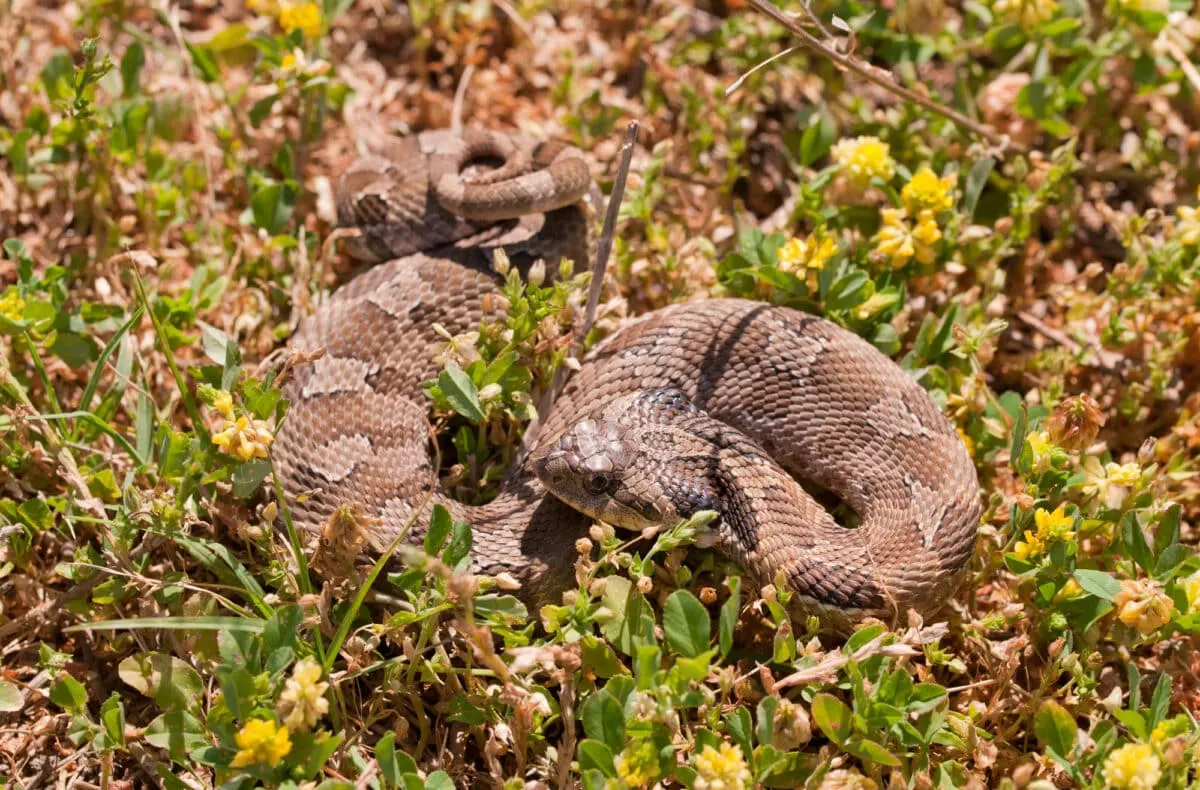The Western Hognose snake, also known as the Heterodon nasicus, is a small-sized venomous snake in different parts of North America.
This snake gets its name from its unique upturned snout, which gives it a distinctive appearance. Despite being venomous, Western Hognose snakes pose no serious threat to humans, and fatalities from their bites are rare.
However, it is essential to understand more about their bite and what to do in case of an encounter with Western hognose snakes.

Want to jump ahead? Click below
Anatomy Of Western Hognose Snake

The Western hognose snake is a unique and fascinating creature with physical features that make it easily identifiable in its natural habitat.
- Appearance
The most distinctive feature of the Western hognose snake is its upturned snout, which gives it a hog-like appearance. This feature helps burrow under the soil quickly and catch prey such as toads, frogs, and rodents.
Their average size is approximately 14-24 inches long, and their scales have a keeled texture that allows them to crawl through various environments. They have a relatively thick body with multiple patterns and colorations, typically grey to brown. They have a unique habit of playing dead, which includes flipping on their backs, opening their mouths, and emitting a foul-smelling odor.
- Venom Glands
Like all other snakes; the Western hognose snake has venom glands just behind their eyes. Although venomous, their bite poses no dire threat to humans, and fatalities from their bites are rare. In most cases, a bite will cause swelling, and localization will subside within a few hours. Unless you have an allergy, the Western hognose snake’s venom is not fatal, and medical attention is not typically necessary.
Western Hognose Snake Feeding Habits
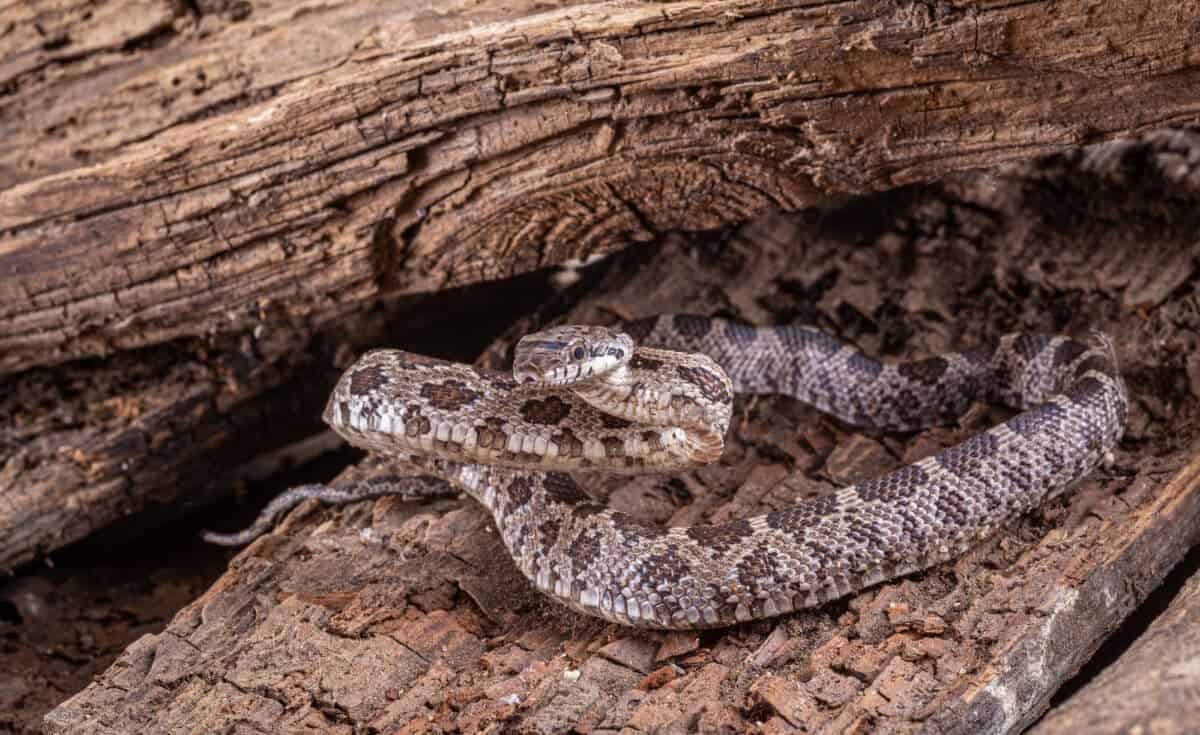
Western hognose snakes are primarily diurnal and feed on small prey, including mice, voles, lizards, frogs, and insects. They use their upturned nose to dig through the soil for prey. They swiftly strike and immobilize prey using venom. Unlike snakes, they don’t coil around their victim but swallow it whole with their wide-open jaws. It’s a unique hunting technique that showcases their hunting prowess and distinguishes them from other snakes.
Defensive Mechanisms
Western hognose snakes have developed various defensive mechanisms despite their non-threatening disposition towards humans. When Western hognose snakes sense danger, they have a distinctive defense mechanism. They flatten their necks, emit a hiss, and release an unpleasant odor from their cloaca.
It’s their way of warding off potential threats and ensuring their safety. They may strike with a closed mouth or the blunt end of their head or even play dead. In extreme cases, they may resort to biting as a last resort.
Effects Of Western Hognose Snake Bite
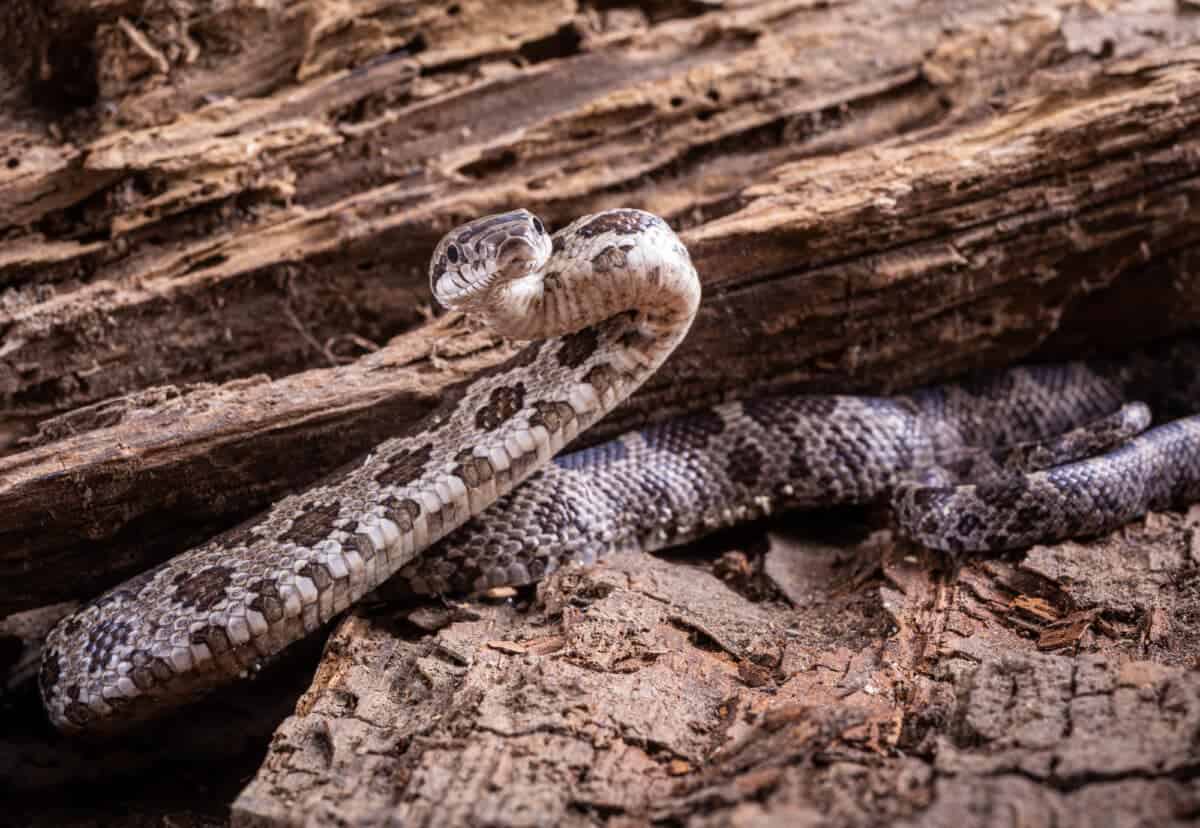
The Western hognose snake is venomous, but its bite is not dangerous to humans. The bite of this snake is relatively mild, and fatalities from their bites are rare. Most bites are painless, and the amount of venom injected is insufficient to cause severe symptoms. However, in rare cases, the bite may cause an allergic reaction.
- Symptoms
The symptoms of a Western hognose snake bite may vary from mild to severe and can occur within minutes to hours. Common symptoms include pain, swelling, redness at the bite site, numbness or tingling in the affected area, nausea, vomiting, and headache. More severe symptoms that may occur in rare cases include respiratory distress, muscle weakness, and anaphylaxis.
- Treatment Of Bite
If a Western hognose snake has bitten you, it is essential to seek medical attention immediately. The first step is to clean the bite wound with soap and water and cover it with a clean, dry dressing. It is crucial not to try to suck out the venom or cut the bite site. These actions can cause more harm than good.
Treating a Western hognose snake bite may include pain control, wound care, and antivenom therapy.
Antivenom therapy is the most effective treatment for severe symptoms such as respiratory distress and anaphylaxis. It is essential to note that antivenom therapy should only be administered by a medical professional and in a hospital setting.
Prevention Of Western Hognose Snake Bite
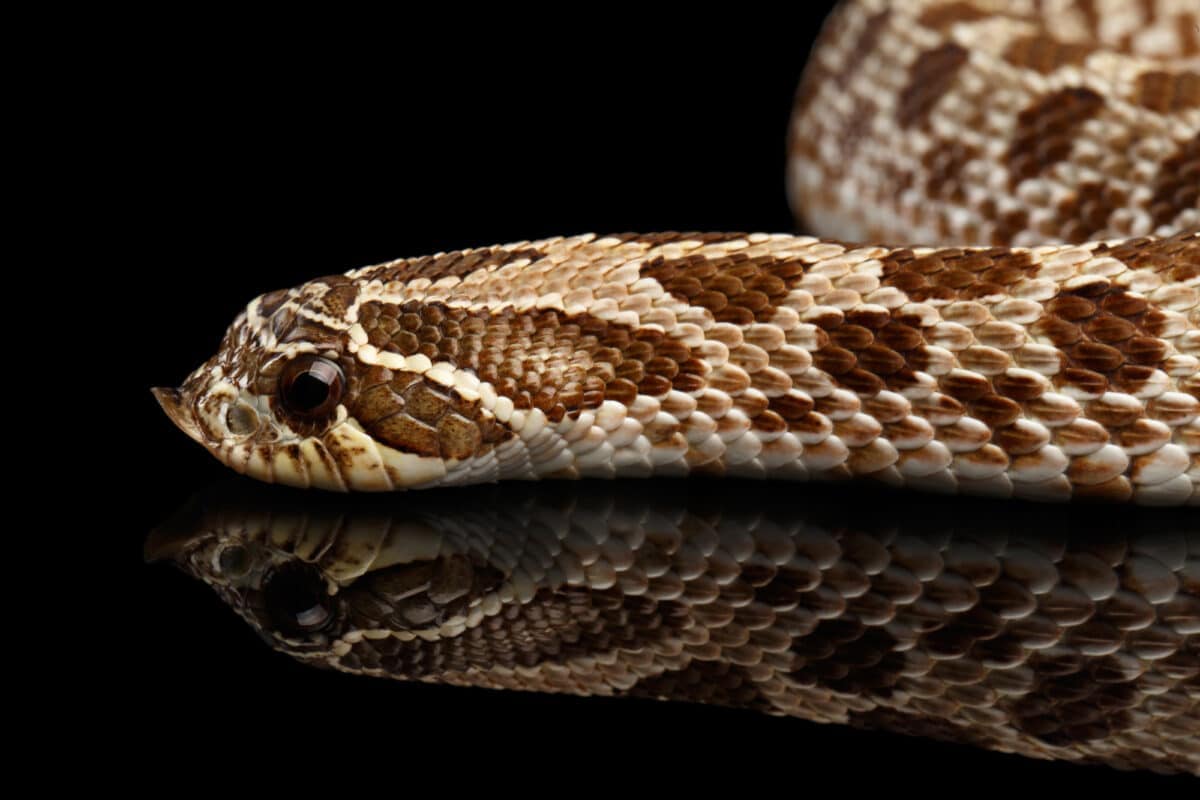
The Western Hognose Snake is not typically aggressive toward humans, but like all snakes, it can defend itself when threatened or provoked. Here are some tips on preventing a snake bite when dealing with Western Hognose Snakes:
Avoiding Encounters With The Snake
The best way to avoid getting bitten by Western Hognose Snakes is to avoid encounters altogether. If you are in an area known to be inhabited by a snake, pay attention to your surroundings and keep an eye out for them. Western Hognose Snakes tend to be active during the day but may also be active at night, so be cautious at all times.
Proper Handling Of The Snake
If you must handle a Western Hognose Snake, it’s crucial to do it carefully and cautiously. You should take the snake only if you have the necessary training and experience or with the help of a professional. Never grab a snake by its head or tail; always support its body to avoid causing undue stress. It is also worth noting that while the Western Hognose Snake is venomous, its venom is mild and rarely poses a serious risk to humans.
Protective Clothing
Wearing protective clothing in an area inhabited by Western Hognose Snakes is essential to preventing bites. It includes wearing long pants and boots when walking in areas with tall grass or other potential hiding places for the snake.
Additionally, gloves and long-sleeved shirts when handling the snake can provide extra protection. If you spend time in a known snake habitat, consider investing in high-quality snake-proof clothing to reduce the bite risk.
Check out A case of Western hognose snake bite.
Key Points
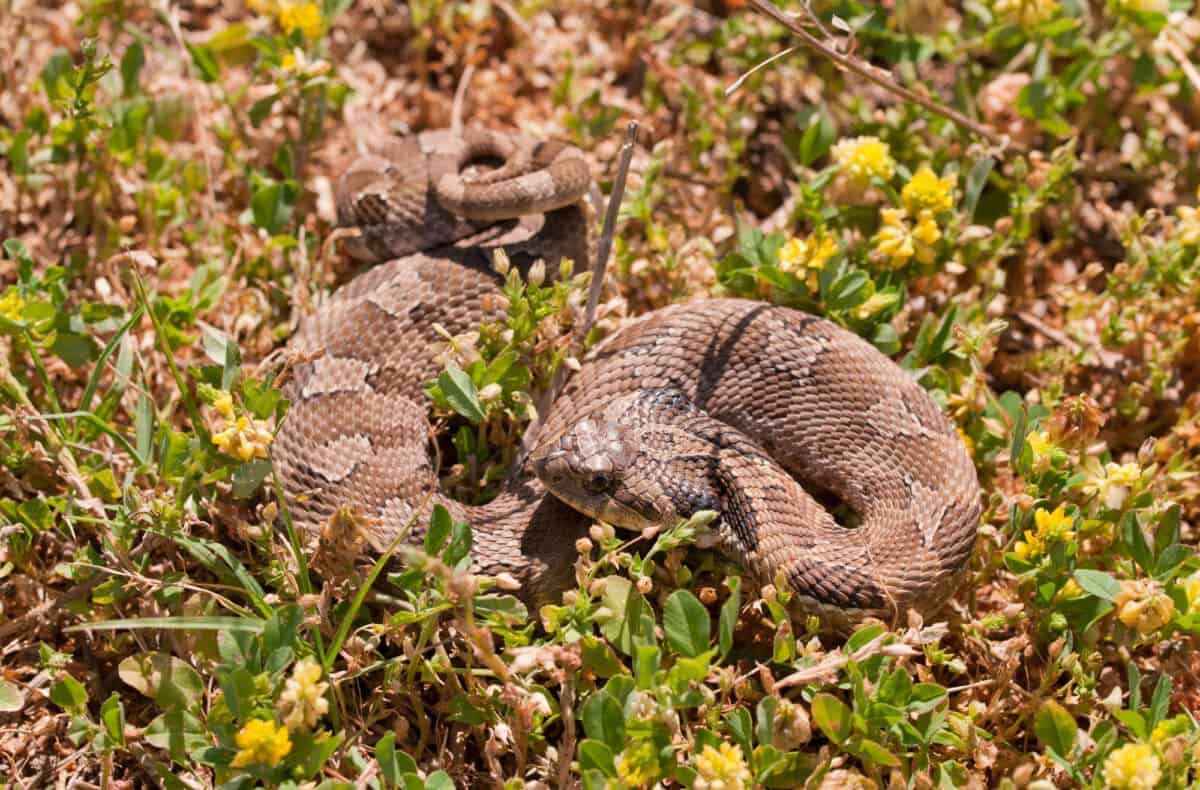
| The Western hognose snake is venomous, but its bite is not dangerous to humans. The bite of this snake is relatively mild, and fatalities from their bites are rare. |
| The most distinctive feature of the Western hognose snake is its upturned snout, which gives it a hog-like appearance. This feature helps burrow under the soil quickly and catch prey such as toads, frogs, and rodents. |
| The symptoms of a Western hognose snake bite may vary from mild to severe and can occur within minutes to hours. Common symptoms include pain, swelling, redness at the bite site, numbness or tingling in the affected area, nausea, vomiting, and headache. |
| Antivenom therapy is the most effective treatment for severe symptoms such as respiratory distress and anaphylaxis. It is essential to note that antivenom therapy should only be administered by a medical professional and in a hospital setting. |
| If you spend time in a known snake habitat, consider investing in high-quality snake-proof clothing to reduce the bite risk. |
Wrapping Up with the Western Hognose Snake Bite
While being bitten by a Western hognose snake is typically not dangerous to humans; it is essential to take it seriously. One should always seek medical attention after being bitten, regardless of whether they feel any symptoms. Taking proper precautions when handling Western hognose snakes can help prevent bites in the first place.
Thanks for following along with me! I hope you enjoyed reading about these two entertaining animals. Next are Dealing With A Rat Snake Bite, Discover Timber Rattlesnake Bite and Discover Palm Pit Viper Bite.
- Bald Eagle Family Expand Their Nest In California - April 24, 2024
- Firefighter Saves Abandoned Kittens Found Cuddling In Hoses - April 24, 2024
- Dolphins Get High Playing Catch With A Pufferfish - April 24, 2024

